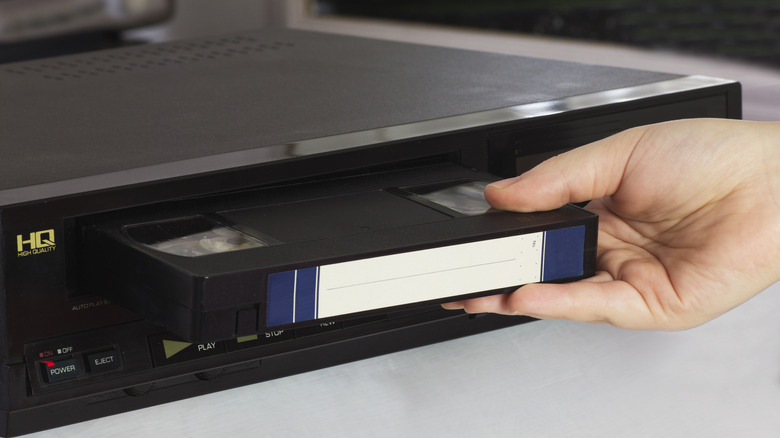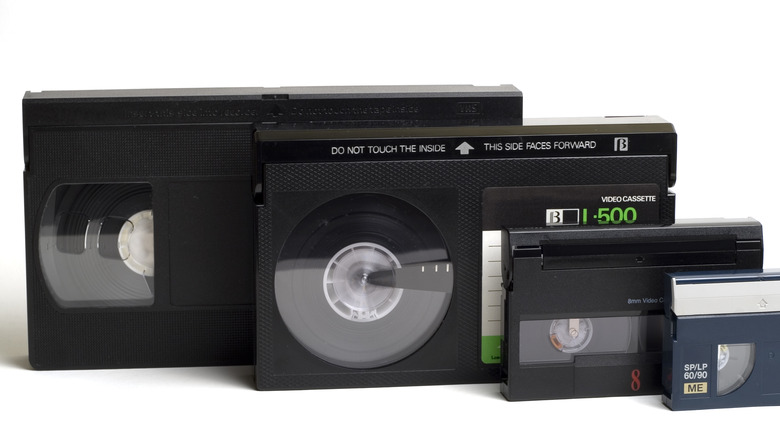The Real Reason Betamax Lost The Format Wars
Most people who grew up in the 1980s remember the giddiness that came with getting the family's first video player. The technology was revolutionary for its time, allowing owners to record on videotape any television program that aired and play it back instantly, "on-demand." It was a glorious time to be alive. Part of that culture shift included the now infamous Betamax vs. Video Home System (VHS) war.
The skirmish actually began brewing in the 1970s, but it wasn't until commercial videotape players became affordable to the general public that the war erupted. In 1975, Sony had the Betamax tape format in its corner, convinced it provided a far superior quality recording. And they weren't wrong. Sony's format had an overall better image with more vibrant colors (via Paste), remained more stable when fast-forwarding or rewinding, and was physically smaller. Betamax also had better resolution, clocking in at 333 x 486 with 250 lines of horizontal resolution compared to VHS tapes at 320 x 486 and only 240 lines.
As early as 1971, JVC was experimenting with a new videotape format, and in 1972, Phillips brought to the consumer market a design they dubbed "Video Cassette Recording" (aka VCR). The physical tape was one inch wide compared to the .5 inch width of the Betamax, and the cassette was bigger than Sony's version. Betamax tapes initially could only record up to one hour, while the VHS format allowed up to two hours. Sony was convinced that no one would need or want to record longer than an hour because it had been a television standard for so many years, which turned out to be wrong.
Size doesn't always matter
JVC officially announced the VHS-format VCR in 1976 and with two formats on the market, both sides dug in (via Sony). Mitsubishi Electric, Matsushita, Hitachi, Sharp, and Akai Electric went with JVC's VHS format, while Toshiba, Sanyo Electric, NEC, Aiwa, and Pioneer sided with Sony's Beta format. Sony visited Matsushita's Osaka headquarters at the end of 1976 to try and persuade them to adopt Betamax. Sony placed one of its players next to a JVC player with both lids off, and Matsushita went with JVC's player because they had fewer components and could be made for less money.
It wasn't just the recording media themselves that were better; Sony's videotape players and recorders were better because they manufactured most of them themselves. And if Sony didn't build them, it was done by manufacturers they closely monitored, so quality was never an issue. But according to Grunge, JVC wanted to do things differently and licensed its VHS technology to any manufacturer that wanted to make its VCRs. Sony wouldn't allow its players to be made without direct oversight. This decision ultimately helped lead to the demise of the Beta format as it fostered competition between the various companies making the VHS players and, in turn, eventually drove the prices down to a level far more affordable choice than Sony's high-priced machines.

